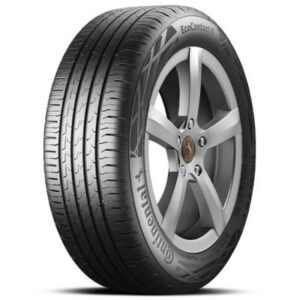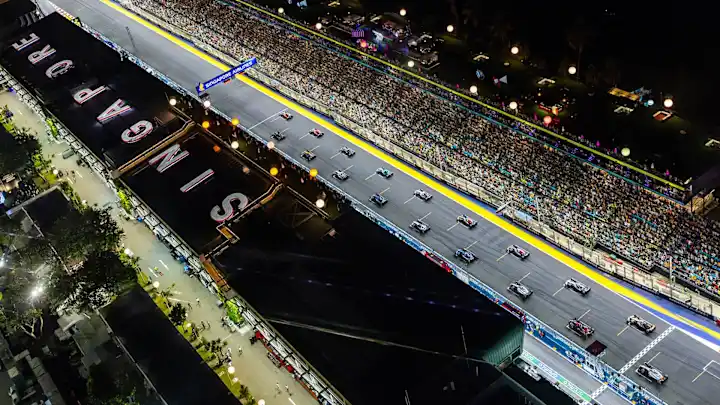Best All-season Tyres For Singapore Roads
Best All-Season Tyres for Singapore Roads: A Comprehensive Guide
Singapore’s unique climate presents a fascinating challenge for drivers when it comes to tyre selection. While the island nation doesn’t experience the dramatic seasonal shifts of temperate regions, its consistently high temperatures, frequent heavy rain, and urban driving conditions demand a specific type of tyre. This guide delves into the world of all-season tyres, exploring why they’re an excellent choice for Singapore roads and recommending top contenders.
Gone are the days when drivers had to choose between dedicated summer and winter tyres. All-season tyres offer a compelling blend of performance characteristics, designed to handle a wide range of conditions. For Singapore, this means reliable grip on both dry, scorching asphalt and slick, rain-soaked surfaces. They also offer a longer lifespan and greater convenience compared to constantly switching between specialised sets.
Table of Contents
- Why All-Season Tyres for Singapore?
- Key Features to Look for in Singapore All-Season Tyres
- Top All-Season Tyre Recommendations for Singapore
- Maintaining Your All-Season Tyres
- Frequently Asked Questions (FAQs)
- Conclusion
Why All-Season Tyres for Singapore?
The term “all-season” might conjure images of snow and ice, but in Singapore’s context, it refers to tyres optimised for a different set of challenges. Here’s why they make sense:
Consistent Performance in Varied Weather
Singapore experiences two main seasons: wet and dry. All-season tyres are engineered with tread compounds and patterns that provide excellent grip in both scenarios. Their sipes (small grooves) help evacuate water efficiently, reducing the risk of hydroplaning during heavy downpours, while their robust construction handles the heat of dry roads.
Convenience and Cost-Effectiveness
Unlike regions where drivers swap between summer and winter tyres, Singaporean drivers can stick with one set year-round. This eliminates the cost and hassle of tyre changes and storage, making all-season tyres a practical and economical choice.
Durability and Longevity
Many all-season tyres are designed for extended tread life, offering good mileage before needing replacement. This is a significant advantage for drivers who clock up considerable distances in Singapore’s urban environment.
Key Features to Look for in Singapore All-Season Tyres
When selecting all-season tyres for Singapore, prioritise these characteristics:
Excellent Wet Grip
Given Singapore’s frequent heavy rainfall, superior wet grip is paramount. Look for tyres with high ratings for wet braking and handling. Advanced tread patterns with wide circumferential grooves and numerous sipes are crucial for water evacuation.
Heat Resistance
The tropical climate means roads can get extremely hot. Tyres need to be able to withstand these high temperatures without compromising performance or accelerating wear. Durable rubber compounds are essential.
Low Rolling Resistance
Fuel efficiency is always a consideration. Tyres with low rolling resistance can help reduce fuel consumption, which is beneficial for both your wallet and the environment.
Comfort and Low Noise
For daily commuting, a comfortable and quiet ride is highly desirable. Look for tyres designed to minimise road noise and absorb vibrations effectively.
Top All-Season Tyre Recommendations for Singapore
Based on their performance characteristics and suitability for Singapore’s conditions, here are some of the best all-season tyre options:
Michelin CrossClimate 2
The Michelin CrossClimate 2 is renowned for its exceptional all-weather performance. It excels in wet conditions, offering impressive braking distances and hydroplaning resistance. Its V-shaped tread pattern is designed for optimal water displacement and consistent grip.
| Pros | Cons |
|---|---|
| Excellent wet and dry grip | Higher price point |
| Long tread life | |
| Good fuel efficiency | |
| Quiet and comfortable ride |
Goodyear Vector 4Seasons Gen-3
Goodyear’s Vector 4Seasons Gen-3 is another strong contender, known for its balanced performance across various conditions. It offers reliable grip in both wet and dry weather, along with good mileage and a comfortable ride. Its Aqua Control Technology enhances wet braking.
| Pros | Cons |
|---|---|
| Strong wet braking performance | |
| Good tread life | |
| Comfortable and quiet | |
| Competitive pricing |
Continental AllSeasonContact
The Continental AllSeasonContact is praised for its strong performance in wet conditions and impressive fuel efficiency. It features an open shoulder design for efficient water dispersion and a silica-rich compound for enhanced grip. It’s a great all-rounder for Singapore’s climate.
| Pros | Cons |
|---|---|
| Excellent wet grip and handling | |
| Low rolling resistance (fuel efficient) | |
| Comfortable ride | |
| May not be as quiet as some competitors |
Maintaining Your All-Season Tyres
To maximise the lifespan and performance of your all-season tyres in Singapore, follow these maintenance tips:
Regular Tyre Pressure Checks
Proper tyre pressure is crucial for safety, fuel efficiency, and tyre longevity. Check your tyre pressure at least once a month, or before long journeys, and adjust according to your vehicle’s manufacturer recommendations.
Tyre Rotation
Regular tyre rotation (every 8,000-10,000 km) helps ensure even wear across all four tyres, extending their overall lifespan.
Wheel Alignment and Balancing
Periodically check your wheel alignment and balancing. Misaligned wheels can lead to uneven tyre wear and affect handling, especially in wet conditions.
Tread Depth Monitoring
Ensure your tyre tread depth meets the legal minimum. In Singapore, the legal minimum tread depth is 1.6mm. Worn tyres significantly compromise grip, particularly in the wet.
Frequently Asked Questions (FAQs)
Are all-season tyres better than summer tyres for Singapore?
While summer tyres offer slightly better performance on dry, hot roads, all-season tyres provide a more balanced performance across the wet and dry conditions prevalent in Singapore, making them a more practical and safer choice overall.
How long do all-season tyres typically last in Singapore?
The lifespan of all-season tyres depends on driving habits, road conditions, and maintenance. On average, you can expect them to last between 40,000 to 80,000 kilometres in Singapore.
Can I use all-season tyres on a performance car in Singapore?
For high-performance vehicles, dedicated performance summer tyres might offer a slight edge in ultimate dry grip and handling. However, modern all-season tyres, especially premium ones, can still provide excellent performance for spirited driving while offering better wet weather capabilities.
Conclusion
Choosing the best all-season tyres for your vehicle in Singapore is a smart decision that prioritises safety, convenience, and performance. By understanding the unique demands of Singapore’s climate and focusing on key features like wet grip and heat resistance, you can select a tyre that will serve you well on every journey. The recommended tyres – Michelin CrossClimate 2, Goodyear Vector 4Seasons Gen-3, and Continental AllSeasonContact – represent excellent choices, offering a blend of reliability, comfort, and durability for the discerning Singaporean driver.
Pirelli Cinturato All Season Plus
Pirelli’s Cinturato All Season Plus is designed for urban mobility and offers a good balance of performance, safety, and eco-friendliness. It features a directional tread pattern with wide grooves for excellent water expulsion, making it well-suited for Singapore’s rainy season. Its compound is also optimised for reduced rolling resistance.
| Pros | Cons |
|---|---|
| Good wet performance | |
| Eco-friendly (low rolling resistance) | |
| Comfortable ride | |
| May not offer the same level of ultimate dry grip as some competitors |
Hankook Kinergy 4S2
The Hankook Kinergy 4S2 is a highly capable all-season tyre that offers reliable performance in both wet and dry conditions. Its V-shaped tread pattern and high-grip silica compound ensure excellent traction and braking. It also boasts good longevity and a comfortable ride, making it a value-for-money option.
| Pros | Cons |
|---|---|
| Excellent wet and dry performance | |
| Good value for money | |
| Long tread life | |
| Quiet and comfortable |
Understanding Tyre Markings: What Do They Mean for Singapore?
When purchasing tyres, you’ll notice a series of numbers and letters on the sidewall. Understanding these markings is crucial for ensuring you select the correct tyre for your vehicle and for Singapore’s conditions.
Size Designation (e.g., 205/55 R16)
- 205: Tread width in millimetres.
- 55: Aspect ratio (sidewall height as a percentage of the width).
- R: Radial construction (the most common type).
- 16: Rim diameter in inches.
Always match these to your vehicle’s specifications, usually found on a sticker inside the driver’s door jamb, glove compartment, or in your owner’s manual.
Load Index and Speed Rating (e.g., 91V)
- 91: Load Index, indicating the maximum weight the tyre can support.
- V: Speed Rating, indicating the maximum speed the tyre is certified for.
For Singapore, while extreme speed ratings aren’t necessary due to speed limits, ensuring the load index is appropriate for your vehicle is vital for safety.
M+S and 3PMSF Symbols
- M+S (Mud and Snow): This marking indicates the tyre has been designed to offer better traction in muddy and snowy conditions than a standard summer tyre. Most all-season tyres carry this.
- 3PMSF (Three-Peak Mountain Snowflake): This symbol signifies that the tyre has met specific performance requirements in severe snow conditions, making it a true winter-capable tyre. While not strictly necessary for Singapore, its presence on an all-season tyre indicates superior cold-weather (and often wet-weather) performance due to its advanced compound and tread design.
For Singapore, while snow isn’t a concern, the advanced wet grip properties often found in 3PMSF-certified all-season tyres can be a significant advantage during heavy downpours.
UTQG Ratings (Uniform Tyre Quality Grading)
These ratings provide a comparative measure of a tyre’s treadwear, traction, and temperature resistance.
- Treadwear: A comparative rating based on the wear rate of the tyre when tested under controlled conditions. A higher number indicates a longer expected tread life. For example, a tyre with a treadwear rating of 400 should last twice as long as one with a rating of 200.
- Traction: Graded from AA, A, B, to C, with AA being the highest. This indicates the tyre’s ability to stop on wet pavement under controlled conditions. Aim for A or AA for Singapore’s frequent rains.
- Temperature: Graded from A, B, to C, with A being the highest. This indicates the tyre’s resistance to heat generation and its ability to dissipate heat. Given Singapore’s hot climate, an A rating is highly desirable.
Tyre Care and Maintenance in Singapore’s Climate
Beyond the general tips, Singapore’s specific climate demands particular attention to certain aspects of tyre care.
Impact of Heat on Tyres
Constant high temperatures can accelerate the aging process of rubber compounds, leading to cracking and reduced flexibility. Parking in shaded areas when possible can help. Regularly inspect your tyres for any signs of cracking on the sidewalls or between the tread blocks.
Hydroplaning Prevention
Heavy rainfall is a given. Ensure your tyres have sufficient tread depth (well above the legal minimum) to effectively channel water away. Reduce speed during heavy downpours to minimise the risk of hydroplaning, even with excellent all-season tyres.
Pothole Awareness
While Singapore’s roads are generally well-maintained, heavy rain can sometimes lead to potholes. Hitting potholes can cause internal damage to tyres, leading to bulges or even blowouts. Be vigilant, especially after heavy rain, and avoid driving through standing water where potholes might be hidden.
UV Radiation
The intense tropical sun can also degrade tyre rubber over time. While modern tyres are formulated with UV inhibitors, consistent exposure can still take its toll. Regular cleaning and application of a non-silicone-based tyre dressing can offer some protection, though parking in shade remains the best defence.
Frequently Asked Questions (FAQs) – Extended
What is the difference between all-season and all-weather tyres?
While often used interchangeably, there’s a subtle distinction. “All-season” tyres are generally M+S rated and offer a compromise between summer and winter performance. “All-weather” tyres, on the other hand, typically carry the 3PMSF (Three-Peak Mountain Snowflake) symbol, meaning they meet specific severe snow performance standards. For Singapore, this distinction primarily means that all-weather tyres (with 3PMSF) often have superior wet grip and performance in cooler temperatures, which can be beneficial during prolonged rainy periods.
Do all-season tyres affect fuel consumption?
Modern all-season tyres are increasingly designed with fuel efficiency in mind, often featuring low rolling resistance compounds and designs. While some dedicated summer tyres might offer slightly lower rolling resistance, the difference is often negligible for the average driver. Look for tyres with good UTQG temperature and traction ratings, and specifically mention low rolling resistance in their features, to ensure good fuel economy.
How often should I replace my all-season tyres?
Beyond tread depth, tyres should generally be replaced after 5-6 years, regardless of mileage, due to the natural aging process of the rubber. Most manufacturers recommend replacement after 10 years, even if they look fine. Always check the manufacturing date (DOT code on the sidewall) and consult with a tyre professional for an assessment.
Can I mix different brands of all-season tyres?
It is generally not recommended to mix different brands or types of tyres on your vehicle. Tyres from different manufacturers, or even different models from the same manufacturer, will have varying tread patterns, rubber compounds, and performance characteristics. This can lead to uneven handling, braking, and stability, especially in adverse conditions. For optimal safety and performance, always use four identical tyres.
What are the legal requirements for tyres in Singapore?
In Singapore, the legal minimum tread depth for passenger car tyres is 1.6mm across the main grooves. Tyres must also be free from cuts, bulges, or any other damage that might compromise their structural integrity. It’s also illegal to use tyres that are not suitable for the vehicle’s load and speed ratings. Always ensure your tyres comply with Land Transport Authority (LTA) regulations.
Where can I buy and install all-season tyres in Singapore?
All-season tyres are widely available from major tyre retailers and workshops across Singapore. Popular options include Stamford Tyres, TyrePac, and various independent workshops. It’s advisable to choose a reputable dealer who can provide professional installation, wheel balancing, and alignment services.
Are all-season tyres more expensive than summer tyres?
The price of all-season tyres can vary widely depending on the brand, size, and specific features. Generally, premium all-season tyres might be comparable in price to premium summer tyres. However, considering the convenience of not needing to swap tyres seasonally and their often longer tread life, they can be a cost-effective choice in the long run for Singaporean drivers.





